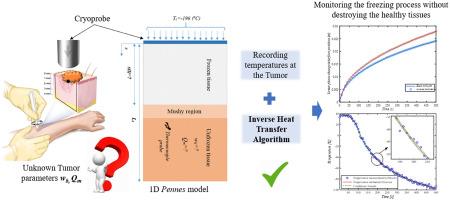Inverse heat transfer prediction of the thermal parameters of tumors during cryosurgery
Abstract
An inverse heat transfer approach for predicting the moving freezing front and the temperature distribution inside tumors during cryosurgery is presented. By recording the time-varying temperature at the surface of the diseased tissues, the inverse method is able to estimate simultaneously the blood perfusion rate and the metabolic heat generation of the tumor. Once these thermal properties are determined, the temperature field and the moving freezing front are predicted with a direct method. The direct problem is solved with the one-dimension Pennes bioheat equation and the enthalpy method. The inverse model rests on the Levenberg-Marquardt Method (LMM) combined to the Broyden Method (BM). The following effects on the predictions of the inverse method are investigated: (i) the initialization of the unknown thermal properties; (ii) the thermal properties of the diseased tissues; (iii) the duration of cryosurgery; (iv) the temperature of the cryoprobe; (v) the noise level on the recorded temperatures; and (vi) the total number of recorded data. It is shown that the proposed inverse method remains accurate and stable for all cases investigated. Recommendations are made for the initialization of the parameters of the inverse method and for the total number of measurements.


 求助内容:
求助内容: 应助结果提醒方式:
应助结果提醒方式:


